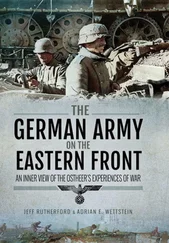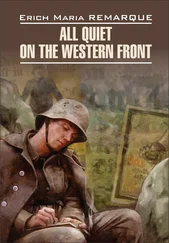Having a chum in the same draft helped, and he recognised some NCOs from Stoughton. There were more decent blokes than bad bastards: any section had three or four good men, as many average, and one or two walking disasters, usually weeded out and sent off to the trench mortars in one of their periodic appeals for men. Officers were recognisably different in style and substance, and there were still enough pre-war regulars to give the battalion an old army feel of Blanco and brickdust.
The pattern of battalion life, with rotation between the front line, reserve trenches and rest billets (usually with more work than rest), came easily to Atkins. There was no sense in fighting what you couldn’t change. Food was regular, if predictable, and there was not much to spend your pay on but omelette and chips, accompanied by thin French beer or sharp white wine. Two shillings a week went home to his mother. The rest, increasing from a private’s miserable 1 shilling a day to a corporal’s more respectable 1s 3d in July 1916, as Somme casualties created vacancies, went straight into his belly. He was shocked the first time he was shelled, and profoundly surprised the first time he was sniped at: rifle fire was so much more personal, and it seemed odd that a German he had never met should try to kill him.
By this April of 1917 he has become familiar with death and wounds, with enough of his friends dead to be aware of his own mortality but not so many lost as to make him obsessed by the risks he must run. He knows his job, thinks himself good at it, and believes that his superiors think so too. The only drawback to the promotion that cannot be far away is that it will make it harder for him to see his mate, Corporal Jack Chamberlain.
Further back down the gentle slope, towards the barbed wire in front of the British front-line trench, are Nos 3 and 4 Platoons, the remainder of A Company. Shiny A is the battalion’s right-forward company. It is to attack at zero hour, 5.15 that morning, with B Company on its left and C and D Companies behind. The two rear companies, in the British front line and the communication trenches just behind it, will advance in section worms, little columns which will make them easier to control as they move forward, passing through the first wave of attacking companies to consolidate the captured ground.
The layout of the morning’s plan is quite clear in Atkins’s mind. Five minutes before the attack British field artillery will shell the German front line, while heavier guns will reach out more deeply in an effort to prevent the German artillery from responding effectively to the SOS rockets which their infantry will be sure to send up. As the advance begins the artillery will fire a creeping barrage, moving 100 yards every three minutes. Atkins knows that he and his men must ‘lean on the barrage’, leaving no more than 50 yards between the shell bursts and their advancing line. The trick is to arrive on the German front line, where the railway embankment runs across the front of the village, before its garrisons have emerged from their dugouts. Anyone who remembers the opening stages of the battle of the Somme the previous summer knows that it is better to risk losing men from the occasional shell that bursts short than to allow the barrage to spit and crack its way across the landscape too far ahead of the infantry, giving the Germans time to emerge to man their surviving positions and tuck machine guns into fresh shell holes.
The battalion is to take the German front-line trench and the embankment behind it, and then form a defensive flank facing north-east while the other three battalions in the brigade gain more ground. Brigadier General Hanway Cumming, the brigade commander, in a dugout a mile and a half further back, would tell us that the 21st Division on the left and the 4th Australian Division on the right will also be attacking as part of a larger plan conceived by 3rd Army. But this is not a matter for Atkins. He has seen the divisional commander on two occasions, but could not tell us that he is called Major General Herbert Watts and will soon have his reputation for being a very competent operator recognised by a knighthood. Getting to the railway embankment with skin intact will be quite enough for Atkins this morning, and the divisional plan is veiled from him in the mists of higher strategy. His men are to take the German front-line trench, and then work their way along it to the right until they meet the 22nd Manchesters, their right-hand neighbours. The company commander, with his unhappy facility for making the simple complicated (he was a lawyer in another life, which may explain it), calls it ‘effecting a junction’.
An artillery forward observation officer and his two signallers will move up with the company, the signallers unrolling cable as they go to maintain telephone communication with the guns. Goodness knows how long it will last, for unburied cable is easily cut by shellfire or by the iron-rimmed wheels of wagons. The gunner subaltern, warned by his commander that his job is to stay alive as long as he can to keep in contact with the guns, is not at his best. Like most officers in this part of the field he is dressed as a private soldier, and Private Desmond, perhaps entirely innocently, has already asked him: ‘Spare a fag, cocker?’ Although Desmond was put in the picture by an outraged signaller, it was not a good start for any gunner’s day.
Corporal Atkins’s little band of nine is much the same as any other British section in France this chilly morning. Although this is in theory a regular battalion, there is actually only one regular in the section. Private Sammy Jacques, with his rheumy eye, droopy moustache and South African War medal ribbons, resolutely does no more and no less than his duty, honouring the oath he took, half a lifetime ago, to ‘defend Her Majesty, her heirs and successors, in person, crown and dignity, against all enemies’. Although Atkins is nearly half his age, Jacques always properly calls him ‘Corp’, and never trades on his long service – except to lace his language with the impenetrable patois of the old India hand for whom a rifle is always a bundook, a girl a bint and a bed a charpoy. He is no problem out of the line, for he drinks to get drunk, and goes straight from upright and thirsty to horizontal and silent: no unseemly shouting, brawling or resisting the guard.
Atkins’s second-in-command, rejoicing in the rank of temporary, unpaid lance corporal, is Henry Adnam, a solicitor’s articled clerk and public school man who volunteered in late 1915, not long before conscription came into force. Had he joined a year before he might have got straight in with a commission, but those easy days have gone, and if he wants one now he will have to prove himself on mornings like this, and seems in a fair way to be doing so. There are four long-standing members of the section, Abraham, Bertorelli, Jarvis and Wolverton, all also from south London, a reflection of the regiment’s pre-war recruiting base. They are known quantities and men of proven value – Jake, Bertie, Jackie and the Wolf amongst themselves, and to Atkins too, when the presence of an officer does not impose formality. Their preference for holding rations and food parcels in common is tinged with disregard of the property rights of those outside the charmed circle. If the company finds itself diffy (that is, deficient) of any of its stores when they are next checked by the regimental quartermaster sergeant, the Wolf will be let out to prowl and the missing items will be ‘found’, perhaps with file marks where serial numbers used to be.
The remaining three members of the section, Arlington, Kersley and Pryce-Owen, are recent arrivals, young 1916 conscripts drafted in through Etaples to replace men killed or wounded in the steady low-level attrition of a winter’s line-holding. Arlington is from Middlesbrough, Kersley from Shaftesbury and Pryce-Owen from North Wales. Nowadays men are sent forward from the base without much regard for cap badge or local origin: these three became Queensmen at Etaples, and, as Jacques puts it, do not know ‘Braganza’ (the regimental march) from a Number One burner. It is too early to know what to make of them. The three are inclined to chum up, and this morning they lie side by side. Disregarding the allotted spacing of three yards between men, Kersley has wriggled across to Pryce-Owen, whose first battle this will be, and the tips of their boots are touching.
Читать дальше












